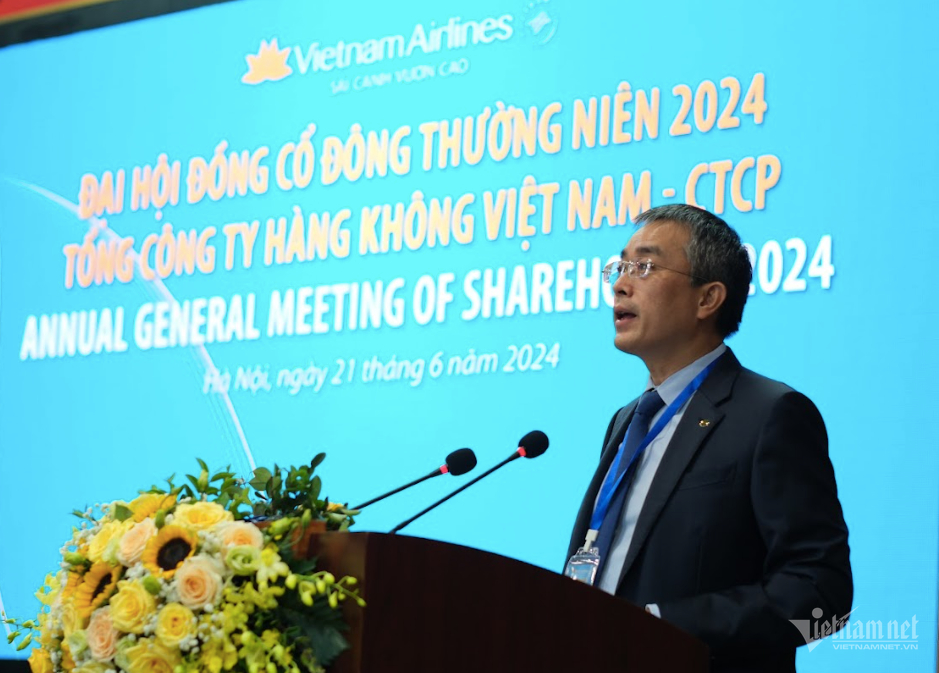The airline's primary goal is to reduce remaining losses and move towards balancing revenue and expenditure in 2024.

According to documents prepared for the meeting, the aviation industry continues to face many obstacles in 2023 due to geopolitical conflicts disrupting supply chains, persistently high fuel prices (over 105 USD/barrel), and fluctuating interest and exchange rates.
Despite these challenges, Vietnam Airlines transported more than 24.1 million passengers and 230,000 tons of cargo last year, reflecting increases of 16.4% and 5.8% respectively compared to the previous period.
The airline's consolidated revenue in 2023 reached VND93,265 billion, nearly 30% higher than the same period in 2022, and approaching its peak in 2019. The consolidated loss before tax decreased by VND5,583 billion, half that of 2022.
Its shares (HVN) began to rise sharply at the end of March and are currently at a five-year peak, with an opening price of VND35,450 on June 21.
At the meeting, Mr. Nguyen Ngoc Canh, Vice Chairman of the State Capital Management Committee at Enterprises, acknowledged Vietnam Airlines' results over the past year. Despite facing numerous challenges from the global economic and political situation, the airline has proactively implemented various solutions to recover, develop, and achieve encouraging results.
Mr. Dang Ngoc Hoa, Chairman of the Board of Directors of Vietnam Airlines, stated that in 2024, the aviation business environment will continue to face many challenges from the world's geopolitical and economic situation.

Based on forecasts, Vietnam Airlines has developed key goals, directions, and tasks. The airline focuses on implementing a restructuring project with comprehensive solutions for restructuring assets, capital sources, investment portfolios, organizational structure, and corporate governance innovation. The main goal is to reduce remaining losses and move towards balancing revenue and expenditure in 2024.
To achieve this goal, in 2024, the airline plans to expand its international flight network with new routes to Western Europe and Southeast Asia. For the domestic market, the airline will adjust flight frequencies to suit market demand, maintain its main market share on key routes, and increase capacity on tourist routes.
Additionally, the airline will prepare to invest in the narrow-body aircraft project and the A321ceo aircraft configuration conversion project to improve operational efficiency, meet market demand, and develop based on the fleet restructuring orientation.
The airline will continue restructuring to overcome the consequences of the Covid-19 pandemic and create a foundation for sustainable development. Restructuring solutions include completing divestment at certain member companies and submitting a plan to competent authorities to extend the repayment of refinancing loans.
The airline will also promote organizational restructuring, reduce intermediary levels, invest in technology, and undergo digital transformation to improve labor productivity and resource quality.
In 2024, Vietnam Airlines aims for a revenue target of 80,894 billion VND and consolidated revenue of 105,946 billion VND. The expected profit is 105 billion VND, as the year is forecast to still face many difficulties.
N. Huyen